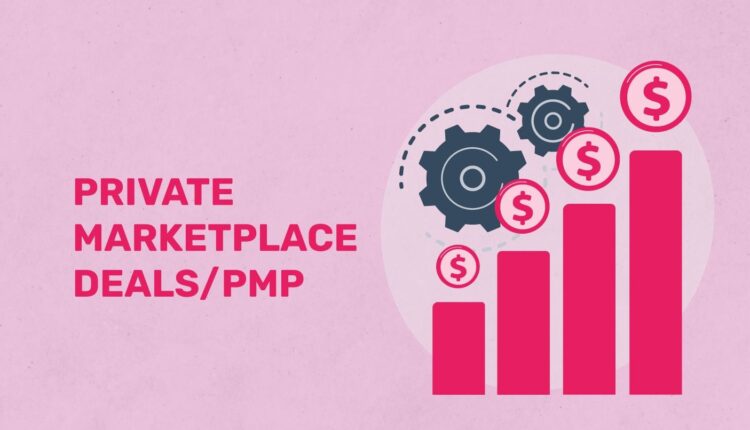In the fast-paced AdTech industry, staying ahead requires strategic planning and smart investments. One effective way to enhance your advertising efforts is by utilizing Private Marketplace (PMP) deals. These exclusive arrangements provide advertisers access to premium inventory, better targeting options, and improved pricing. In this article, we’ll explore how to maximize the benefits of PMP deals to optimize your ad campaigns.
Understanding PMP Deals in AdTech
What Are PMP Deals?
PMP deals, or Private Marketplace deals, are agreements between advertisers and publishers that allow for direct buying of ad inventory in a controlled environment. Unlike open exchanges, where anyone can buy inventory, PMPs offer a more exclusive marketplace, ensuring high-quality placements and often better performance.
Why Use PMP Deals?
- Quality Inventory: PMP deals typically offer access to premium ad placements, ensuring your ads appear in high-quality environments that align with your brand image.
- Enhanced Targeting: These deals allow for advanced targeting options, helping you reach your desired audience more effectively.
- Transparency: PMPs provide better visibility into where your ads will run, allowing for more informed decisions and improved trust between advertisers and publishers.
How to Identify the Right PMP Deals
1. Research Reputable Publishers
Begin by identifying publishers with a strong reputation in your industry. Look for those who align with your brand values and have an audience that matches your target demographic. Research their past performance and further ask for case studies to gauge effectiveness.
2. Compare Inventory Options
Not all PMP deals offer the same inventory. Evaluate the types of placements available, including display ads, video ads, and native advertising. Make sure to consider the quality and relevance of the inventory to your campaign goals.
3. Evaluate Performance Metrics
Before committing to a PMP deal, analyze the publisher’s past performance metrics. Look for data on click-through rates (CTR), conversion rates, and return on ad spend (ROAS). This information will help you make informed decisions and choose the most effective options.
Making the Most of Your PMP Deals
1. Set Clear Campaign Goals
Define what you want to achieve with your PMP deal. Whether it’s brand awareness, lead generation, or conversions, having clear goals will guide your strategy and help measure success.
2. Optimize Targeting Parameters
Use the advanced targeting options offered in PMP deals in order to hone in on your audience. This can include demographic targeting, interest-based targeting, as well as retargeting previous website visitors. The more precise your targeting, indeed the higher the likelihood of campaign success.
3. Create Engaging Ad Creatives
Your ad creatives play a crucial role in the effectiveness of your campaigns. Ensure your ads are visually appealing, relevant, and also clearly convey your message. Experiment with different formats, such as video, carousel, or interactive ads, to see what resonates best with your audience.
4. Monitor Campaign Performance
Once your campaign is live, closely monitor its performance. Use analytics tools to track key performance indicators (KPIs) such as impressions, clicks, conversions, and overall ROI. Regular monitoring allows you to make real-time adjustments to improve outcomes.
5. Foster Relationships with Publishers
Building strong relationships with publishers can further enhance your PMP experience. Open communication allows for collaboration on creative strategies, audience insights, and adjustments to optimize performance. Consider regular check-ins or feedback sessions in order to strengthen this partnership.
Applying Your Insights
1. Analyze Post-Campaign Data
After completing your campaign, conduct a thorough analysis of the data. Look at what worked and what didn’t, and then use these insights to inform future PMP deals. Understanding your campaign’s performance will indeed help you make data-driven decisions moving forward.
2. Share Learnings with Your Team
Share the results and insights gained from your PMP campaigns with your team. This collaborative approach fosters a culture of continuous improvement and thus encourages everyone to contribute ideas for future campaigns.
3. Explore New Opportunities
The AdTech landscape is constantly evolving. Stay informed about new PMP deals and emerging trends within the industry. Regularly explore partnerships with new publishers or platforms in order to diversify your ad strategies.
Conclusion

PMP deals offer a valuable opportunity for advertisers in the AdTech industry to access premium inventory and further improve campaign performance. By carefully selecting the right deals, setting clear goals, and actively monitoring results, you can indeed maximize the benefits of these exclusive agreements. Embrace the potential of PMP deals in order to enhance your advertising strategies and achieve greater success in your campaigns. With the right approach, you’ll be well on your way to achieving your advertising objectives while maintaining a competitive edge in the ever-changing landscape of digital marketing.
FAQs about Maximizing PMP Deals in the AdTech Industry
1. What are PMP deals in the AdTech industry?
PMP deals, or Private Marketplace deals, are exclusive agreements between advertisers and publishers that allow for premium inventory access at negotiated rates, thus ensuring quality placements.
2. How can I choose the right PMP deal for my campaigns?
Evaluate your target audience, campaign objectives, as well as budget. Compare inventory options, audience reach, and performance metrics from various publishers in order to find the best fit.
3. What are the benefits of using them in advertising?
PMP deals provide access to high-quality inventory, enhanced targeting capabilities, better transparency, and often more favorable pricing compared to open marketplace buys.
4. How can I optimize my campaigns using PMP deals?
Continuously analyze campaign performance data, test different creatives, and further adjust targeting parameters based on insights. Regular communication with publishers can also help refine strategies for better results.


